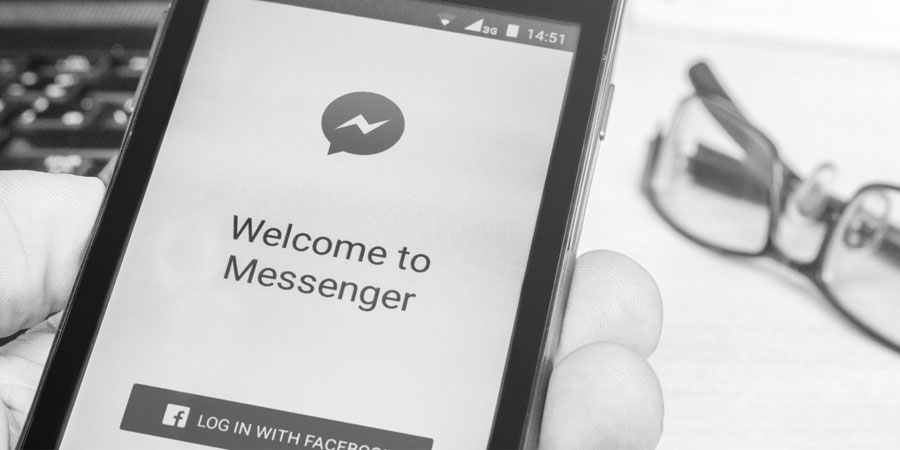For retailers looking to differentiate themselves from the pack during the holidays, Facebook Messenger shops and chatbots are the season’s hottest tools — they’re driving positive PR and, if they’re lucky, some sales.
So far, Facebook Messenger for retailers, which rolled out in April, has emerged as two types of experiences: a facilitator for a live chat with a concierge or an AI-powered chatbot that’s programmed with predictive suggestions that follow pre-determined prompts.
While live chat has become a useful tool for online luxury retailers looking to recreate the helpful guidance of a trained associate found in stores, chatbots have skewed toward gimmick. First surfacing most prominently among fashion houses during fashion week, in the spirit of see-now-buy-now, chatbots have emerged again for the holidays. It’s unlikely they’ve moved the needle in terms of sales (Facebook and the brands declined to share specific information around results), but brands seem to be OK with it — those currently testing the chatbots are gearing up for a future in which communication with customers can happen directly, in Messenger.
“Luxury brands, which come with the expectation of a high service, are more niche. They don’t always have the frequency use-case for folks to download an app, so this is best of both worlds,” said David Hewitt, vp of SapientNitro in a former interview with Glossy. “They have the broader accessibility of Facebook as a platform, while offering app-like functionality.”
The future of mobile retail may not lie in the power of AI bots, but this is how retailers have made the most of them this season.
Extending a holiday campaign
Burberry, known for being digitally daring even as sales slip, is unsurprisingly an early adopter of the chatbot. Following up on a bot it rolled out for London Fashion Week, Burberry returned to Messenger for the holidays with a tool linked to its “Tale of Thomas Burberry” campaign, which sheds light on Burberry’s heritage through video ads starring Domhnall Gleeson.
Through ads on Facebook, viewers of the video (which was posted as an organic video to Burberry’s pages on Facebook and Instagram, as well as used as video ads) were directed to learn more about the story in Messenger. Once there, they could choose one of three options: to be fed more fun facts about Burberry’s founder, to start a live chat with a concierge or to explore Burberry’s gift guides within Messenger. That feature, guided by an automatic bot, used a carousel to display categories (men’s, women’s, scarves, handbags). To make a purchase, customers were directed out of the chat and onto Burberry’s product page.
For Burberry, tying the bot to the campaign was a way to extend the life of the ad, test new waters, drive buzz and, perhaps, drive some sales.
“There are some brands that will hop on new innovation first because it’s part of how they express themselves,” said Nadina Guglielmetti, managing director of social media at Huge. “But figuring out how to capture that data about your audience is next.”
Promoting immediacy
Estée Lauder deployed a bot for the holidays in the U.K. and Ireland this season as an online extension of its No. 6 Mortimer pop-up series. While still promotional as the company builds up its presence in those countries, this bot had a more convincing use-case for making purchases.
The bot offered in-chat purchases, for one, as well as the option of 60-minute delivery for items bought through Messenger in some available areas. Guides to pick up in store and use regular delivery were offered, as well.
“Today’s changing consumer behaviors mean that we need to adapt to the need for instant access,” said president Chris Good. “For the time-poor consumer, convenience is the new luxury.”
Estée Lauder wouldn’t share how many sales the bot drove, but faster shipping is one of the more convincing cases for Messenger as a utility for retailers. Companies like Spring and Everlane, the latter of which offers delivery in some areas through courier service Postmates, link purchases to shoppers’ Facebook accounts to share shipping details in the app.
Personalizing content
BuzzFeed rolled out its first commerce-focused bot this season to connect its many shopping guides to consumers looking for a more personalized experience. (The media company’s first bot was built during the election season to curate relevant content for users from around the web.)
The BuzzFeed AI bot asked users a few questions, like who they were shopping for, how close they were to this person and what emoji represented them best. Once finished, a product from an existing BuzzFeed list was presented, and users could either try again or link out to the full list or product page.
“Our team is trying to figure out what our content can look like off of our platform — and with Messenger, we can reach people where they actually are,” said Peggy Wang, who oversees commerce strategy for BuzzFeed. “And we could give them a more personalized experience.”
Wang said that, since launching on December 12, the bot has had almost 10,000 conversations, and that while there were no prior figures to compare that to, the ability to facilitate one-on-one conversations was “impressive” — she believes that’s something that’s going to be increasingly important to invest in.
“I don’t necessarily think that bots are the future,” she said, “but I don’t think messaging is ever going away — so we’re thinking of it as just another platform. That’s the key.”
This article first appeared in www.glossy.co
Seeking to build and grow your brand using the force of consumer insight, strategic foresight, creative disruption and technology prowess? Talk to us at +9714 3867728 or mail: info@groupisd.com or visit www.groupisd.com


